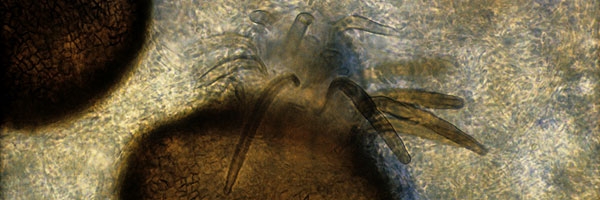
Pyrenochaeta lycopersici R.W. Schneid. & Gerlach, (1966)
Corky root
- classification : Fungi, Ascomycota, Dothideomycetes, Pleosporomycetidae, Pleosporales, Incertae sedis
- téléomorphe : Herpotrichia
- English name: corky root
This telluric * fungus , first described in Europe, is now present in production areas on several continents. It is a marker of so-called “tired” soils which have supported crops of tomatoes on several occasions and / or other sensitive crops, mainly vegetables.
Its impact on Cucurbitaceae is rather confidential, it seems mainly reported on melon, watermelon and cucumber in a few rare countries: Italy, France ...
Few data are available regarding the biological and genetic variability of Pyrenochaeta lycopersici . Three groups of strains would have been defined according to their optima thermal : cold, temperate and hot strains. These groups do not seem to present a great molecular variability according to the scarce work on the subject.
* It should be noted that several fungi, alone or in complexes (this varying according to the production zones and the plots), have been associated in the world (Japan, Israel, Spain, Italy, USA ) with wilting and collapse of melon plants (vine decline, vine collapse), accompanied by lesions and root rots. Among the most common are: Acremonium cucurbitacearum (Syn. Nodulisporium melonis , now called Plectosphaerella melonis ), Macrophomina phaseolina , Monosporascus connonballus , Pyrenochaeta lycopersici , Pythium spp., Rhizoctonia solani , Rhizopycnis ...





